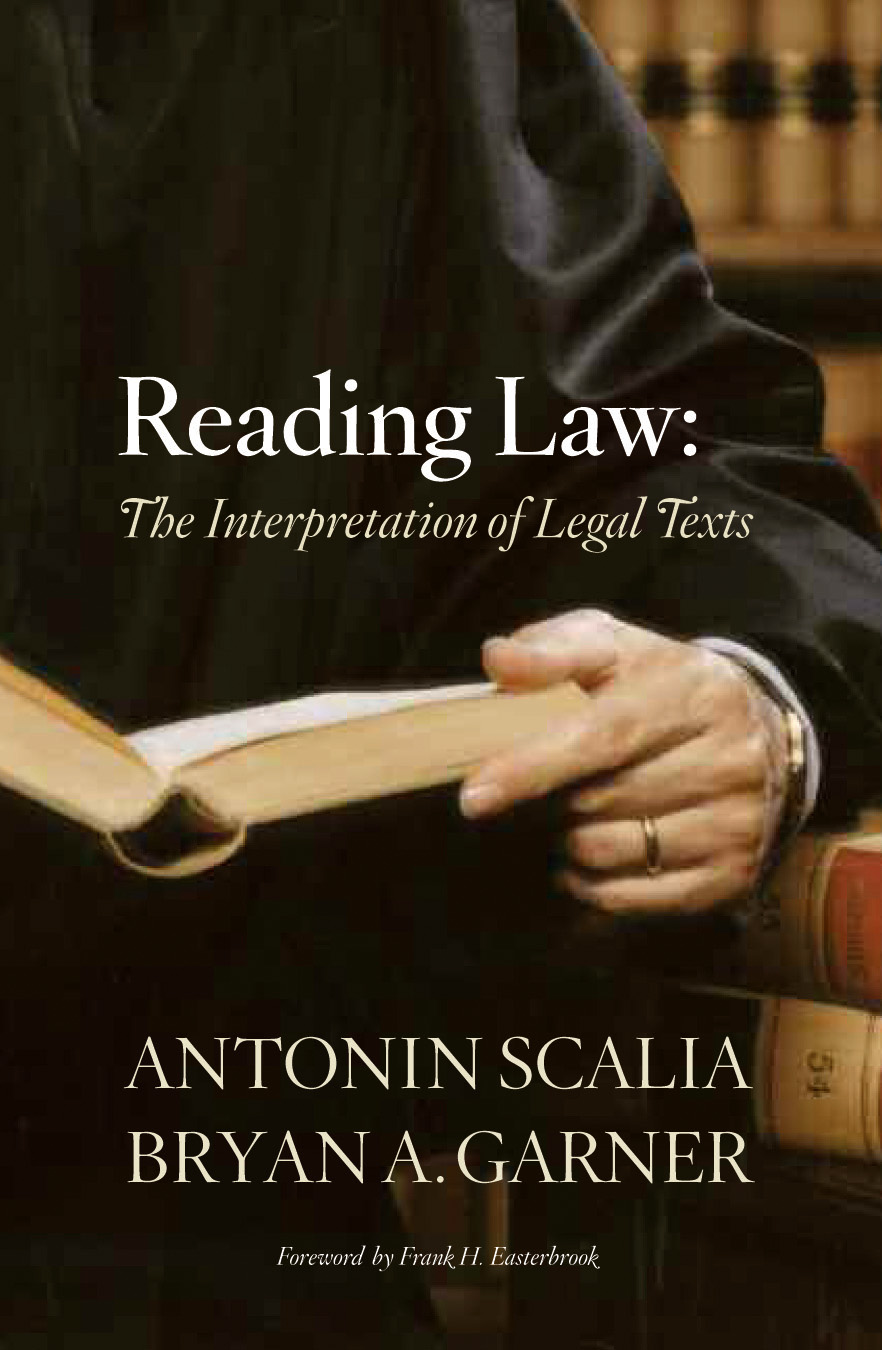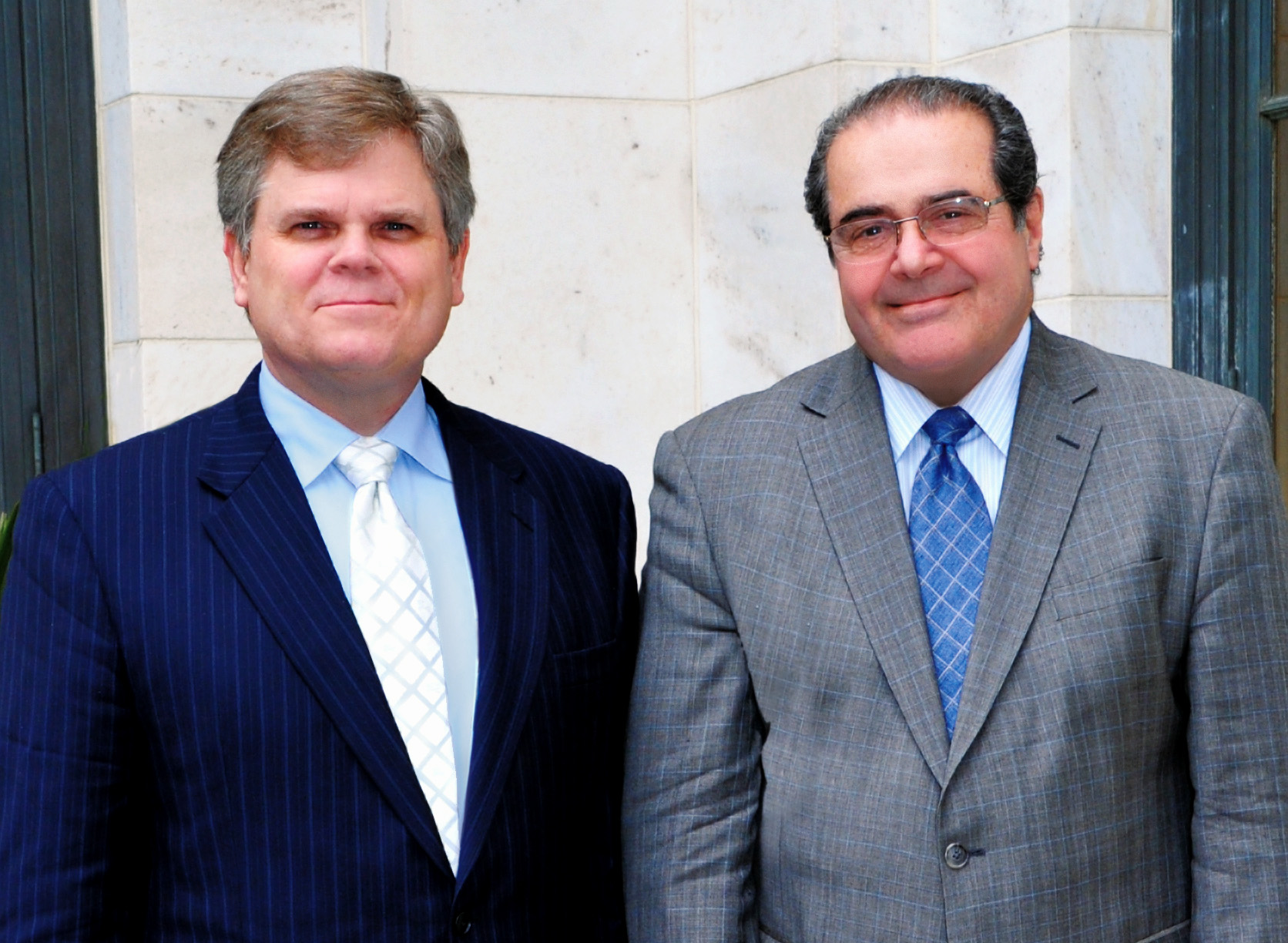SMU law professor helps Supreme Court Justice Scalia
explore legal principles in Reading Law
An SMU law professor and a U.S. Supreme Court justice explain legal language.


For insight, SMU Dedman School of Law Distinguished Research Professor Bryan A. Garner, editor-in-chief of Black’s Law Dictionary, teamed with Supreme Court Senior Associate Justice Antonin Scalia to write Reading Law: The Interpretation of Legal Texts (Thomson Reuters, 2012; $49.95 hardback, $35 digital).
Reading Law couldn’t be timelier: The understanding of legal semantics made headlines in June, when U.S. Supreme Court Chief Justice John Roberts’ ruling on President Obama’s Affordable Care Act led “Obamacare” to be upheld by the Supreme Court in a 5-4 majority vote.
Many expected the Affordable Care Act would be overturned by the conservative-majority Supreme Court. But Roberts, appointed by former President George W. Bush, interpreted that the Affordable Care Act individual mandate functions as a tax — which the legislation termed “a penalty” — and was indeed constitutional. Such linguistic dissection of “tax” versus “penalty” is called “textualism,” and it’s a passion for both Garner and Scalia. The duo first worked together on Making Your Case: The Art of Persuading Judges (2008), having met in 2006 after Scalia praised Garner’s internationally heralded work.
“We look for meaning in the governing texts, ascribe to that text the meaning that it has borne from its inception, and reject judicial speculation about both the drafters’ extratextually derived purposes and the desirability of the fair reading’s anticipated consequences,” Garner and Scalia explain in Reading Law.
As Tony Mauro noted in a National Law Journal review of Reading Law, “Overall the book is an extended plea for judges to hew to the text of statutes and the Constitution in making their decisions and to ignore extraneous factors such as legislative history, the workability of the statute, and the presumed purpose of legislation.”
The 608-page book offers hundreds of examples of the most important principles of constitutional, statutory, and contractual interpretation from actual cases, including whether a burrito is a sandwich, and, if corporations are “people,” are they entitled to privacy?
Reading Law, Mauro said, “is not just a dry recitation of legal rules. It labors hard to explain the rules in plain, often droll language.”
 Prof. Bryan A. Garner (left) and Justice Antonin Scalia. |
Garner and Scalia “wanted to make it readable and understandable for a broad audience,” Garner told Mauro, noting that the authors’ shared goal was to arrive at “one principled approach” to interpretation via a broad range of analytical methods.
SMU Dedman School of Law School Dean John B. Attanasio and nine law students played a significant role in the book and are recognized for their contributions in its “Acknowledgements” section.
“We are very happy to have Professor Garner’s expertise here,” Dean Attanasio said. “Bryan is one of the foremost scholars on legal writing and grammar, which not only is a benefit for SMU law students and faculty, but also for legal students and professionals around the world.”
To learn more about Garner and his work, which includes more than 20 books on legal writing and writing workshops, click here. To read more about Scalia, the longest-serving member of the Supreme Court, click here.
For a CNN interview featuring Garner and Scalia discussing their new book and Justice Scalia’s judicial experiences, click here.
# # #
MEDIA: Click images for high-res versions. Photo credit: Thomson/West.
#09671–web–9/4/12-dg